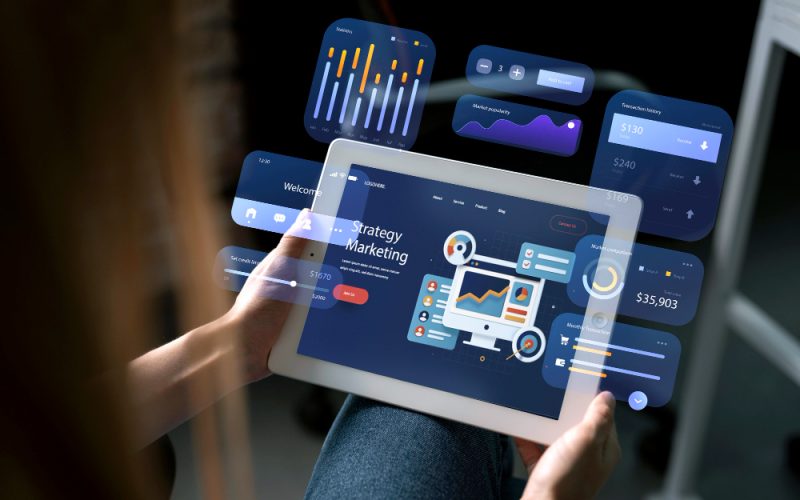Introduction
In the age of big data, businesses are increasingly their collected information to gain a competitive edge. One of the most effective methodologies for achieving this is Predictive Analytics. This advanced form of data analytics anticipates future outcomes, helping companies make informed decisions. From forecasting financial trends to anticipating customer behavior, predictive analytics offers valuable insights that can propel businesses forward.
Predictive analytics is an advanced branch of data science that seeks to answer the question, “What might happen next?” By analyzing historical data and identifying patterns, this technology can forecast future events with remarkable precision. The rise of predictive and augmented analytics has closely aligned with advancements in big data systems.
Definition
Predictive analytics involves the use of data analysis, machine learning, artificial intelligence, and statistical models to identify patterns that may predict future behavior. Organizations utilize both historic and current data to forecast trends.
How Does Predictive Analytics Work?
 Photo by Xu Haiwei on Unsplash
Photo by Xu Haiwei on Unsplash
Step 1: Defining the Problem
The initial step in developing a predictive analytics model is to clearly define the problem. For example, can the model detect fraudulent activity? Can it determine optimal inventory levels for the holiday season, or predict potential flood levels from severe weather conditions? Having a distinct problem to solve helps determine which methods and techniques should be employed.
Step 2: Data Acquisition and Organization
Organizations may have access to extensive datasets accumulated over years or a continuous influx of data from customer interactions. Before predictive models can be developed. And it is essential to identify data flows and organize datasets into a repository . But such as a data warehouse like Google Cloud’s BigQuery.
Step 3: Data Preprocessing
Raw data often contains anomalies, missing points, or outliers resulting from input or measurement errors. Cleaning the data to remove these irregularities is a critical step in preparing it for predictive models.
Step 4: Developing Predictive Models
Data scientists use an array of tools and techniques to develop predictive models, based on the nature of the dataset and the problem at hand. Common types of predictive models include machine learning algorithms, regression models, and decision trees.
Step 5: Validating and Deploying Results
The final step involves checking the model’s accuracy and making necessary adjustments. Once the model yields acceptable results, it can be deployed and made available to stakeholders via apps, websites, or data dashboards.
Key Techniques in Predictive Analytics
Predictive analytics employs several key techniques to generate forecasts:
Regression Analysis
Regression analysis is a statistical method that estimates relationships between variables, helping to identify patterns in large datasets. This technique is especially useful for continuous data that follows a known distribution and can be used to determine how one or more independent variables affect another.
Decision Trees
Decision trees are classification models that categorize data into different groups based on specified variables. Each branch represents a potential choice, and the leaf denotes the decision’s outcome. Decision trees are particularly effective when dealing with datasets that contain several missing variables and are easy to interpret.
Neural Networks
Neural networks are powerful machine learning methods used to model complex relationships. These pattern recognition engines are ideal for determining nonlinear relationships in datasets, especially when no established mathematical formula exists for data analysis. Neural networks can also validate the results of other models, like decision trees and regression models.
Applications of AI Predictive Analytics
 Photo by Xu Haiwei on Unsplash
Photo by Xu Haiwei on Unsplash
AI Predictive Analytics can be employed across various sectors to streamline operations, increase revenue, and mitigate risks. Here are some notable use cases:
Fraud Detection
Predictive analytics can examine all actions on a company’s network in real-time, pinpointing abnormalities that indicate potential fraud or vulnerabilities. By continuously monitoring and analyzing data, businesses can proactively address security concerns.
Conversion and Purchase Prediction
Companies use predictive analytics to retarget online ads to visitors, utilizing data that indicates a higher likelihood of conversion and purchase intent. This enables more effective marketing strategies and better allocation of ad spend.
Risk Reduction
Predictive analytics is widely used in assessing and determining the likelihood of future defaults in credit scoring, insurance claims, and debt collections. By evaluating risk more accurately, companies can make better decisions and safeguard their financial health.
Operational Improvement
Predictive models help businesses forecast inventory needs, manage resources, and operate more efficiently. For instance, retailers can predict demand for specific products and adjust their stock levels accordingly, reducing waste and improving customer satisfaction.
Customer Segmentation
Marketers use predictive analytics to divide their customer base into specific groups, allowing them to make forward-looking decisions and tailor content to unique audiences. This targeted approach enhances customer engagement and loyalty.
Maintenance Forecasting
Organizations employ predictive analytics to anticipate routine equipment maintenance requirements, scheduling it before any problems or malfunctions arise. This proactive maintenance approach minimizes downtime and extends the lifespan of equipment.
Google Cloud and Predictive Analytics
Google Cloud offers a suite of data analytics, machine learning, and artificial intelligence solutions designed to help businesses run smoother and faster with predictive analytics. These tools enable companies to build robust predictive models, streamline data processing, and gain valuable insights with ease.
Getting Started with Google Cloud
Google Cloud provides new customers with $300 in free credits to spend on its platform, making it easier for businesses to explore and implement predictive analytics solutions. By leveraging Google Cloud’s infrastructure, companies can quickly set up data warehouses like BigQuery, preprocess data, and develop and deploy AI predictive models.
Consultations and Support
Google Cloud also offers consultations with sales specialists who can discuss unique business challenges in more detail. This personalized support ensures that companies can effectively harness the power of predictive analytics to address their specific needs and objectives.
Conclusion
AI Predictive Analytics is transforming how businesses operate, allowing them to anticipate future trends and make data-driven decisions. From fraud detection and risk reduction to customer segmentation and operational improvements, the applications of predictive analytics are vast and varied. By leveraging advanced technologies like machine learning and artificial intelligence, companies can unlock the full potential of their data, driving growth and enhancing efficiency.
As the field of predictive analytics continues to evolve, businesses must stay ahead of the curve by adopting these innovative techniques. Google Cloud’s suite of tools and solutions provides a robust platform for implementing predictive analytics, enabling organizations to harness their data’s full potential and achieve their goals. Embracing AI Predictive Analytics is not just a competitive advantage—it is a strategic imperative for businesses looking to thrive in today’s data-driven world.












